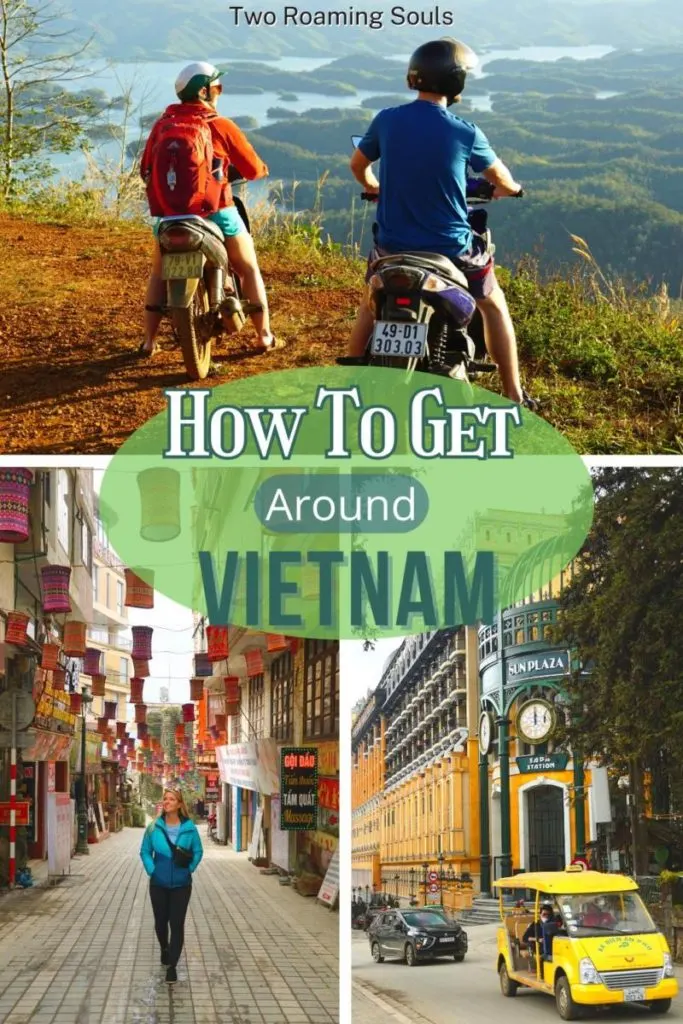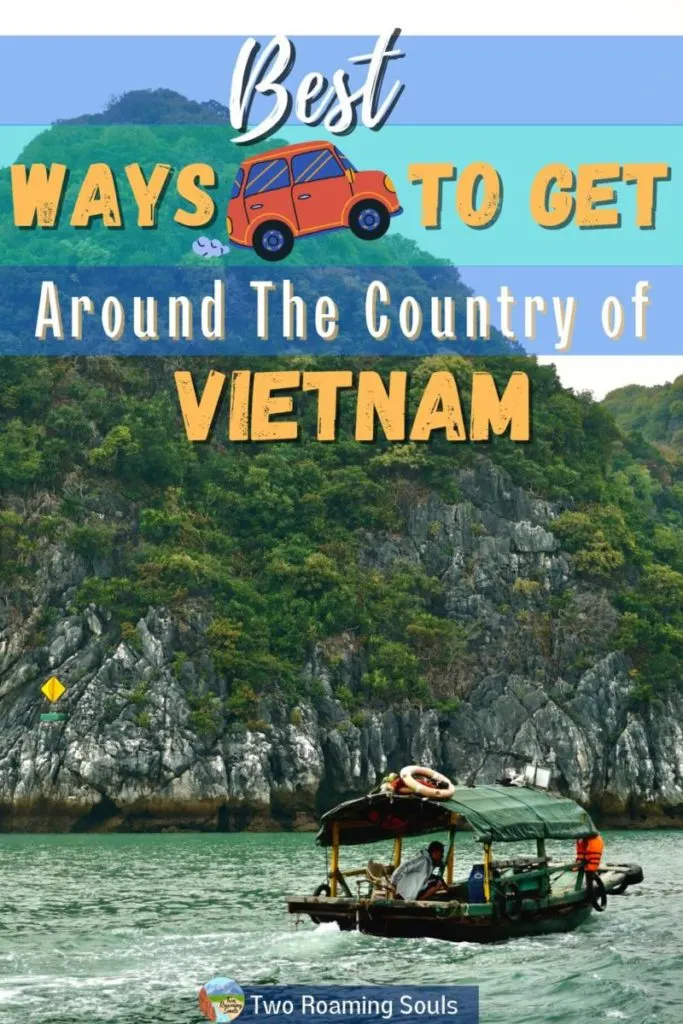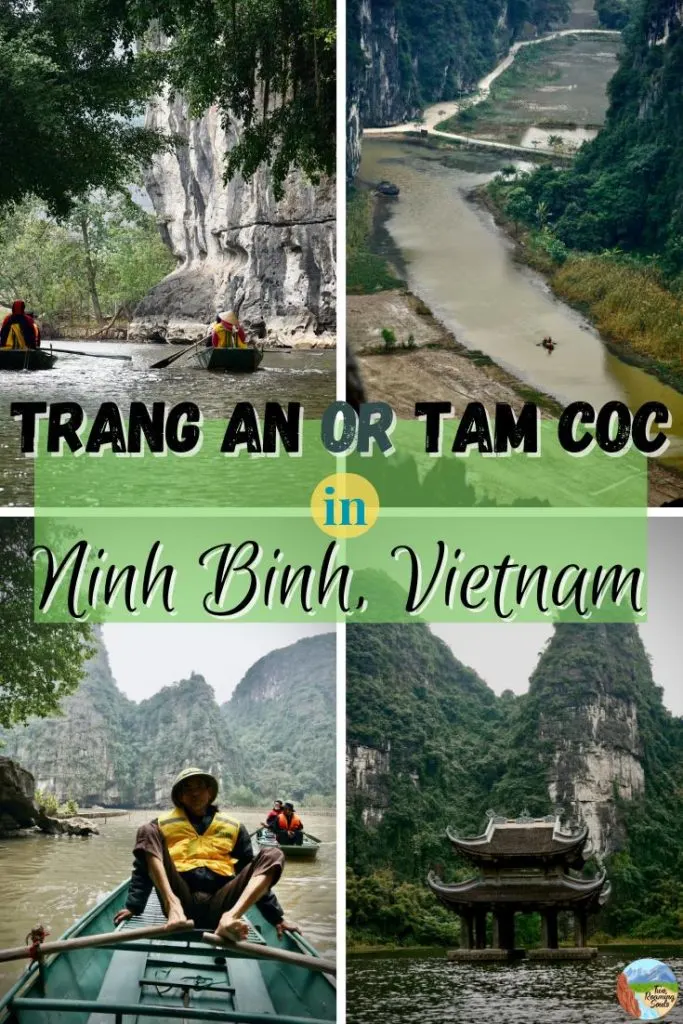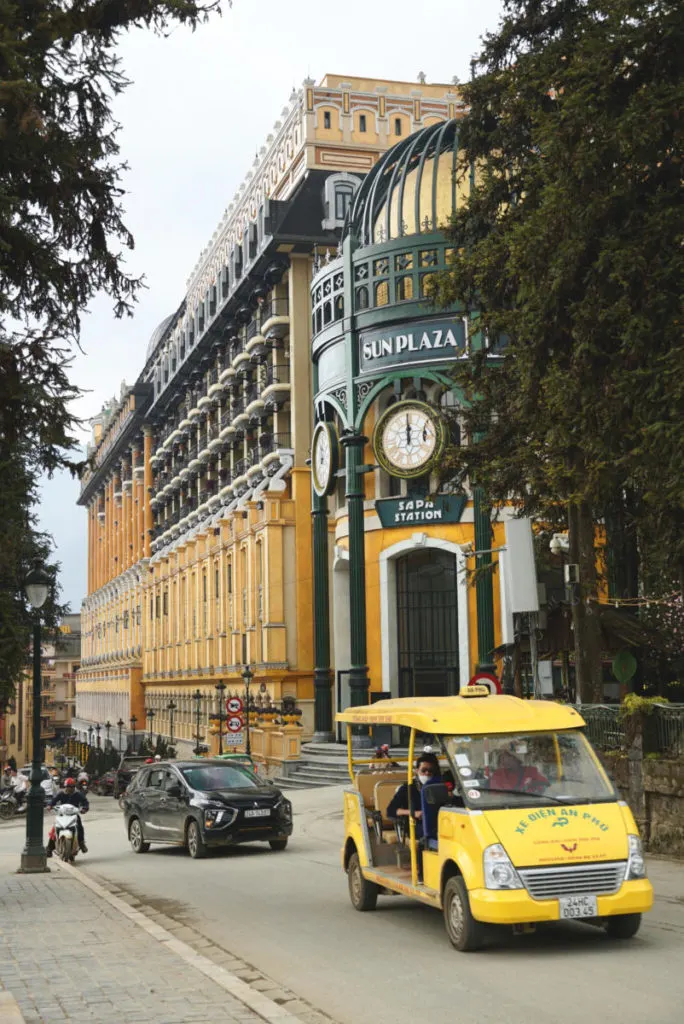
I was extremely intimidated about how to get around Vietnam before traveling there. I was worried about finding my way and also sticking to a budget.
But luckily, getting around Vietnam is surprisingly easy. They have a large tourism industry with plenty of options to help travelers get around. And many transportation options are very affordable, especially compared to what we are used to in the United States.
But from the variety of buses, trains, taxis, Grabs, motorbikes, how do you know which to choose?
You can rent your own car or motorbike, but we generally don’t recommend this option. For starters, driving in Vietnam will be a bit of a culture shock to visitors from Western countries. And second, you need to obtain a license (though actual enforcement is minimal).
This post will help you understand the best options we recommend for traveling around Vietnam.
This post may contain affiliate links. Disclosure policy.
Legally Driving in Vietnam
There are a few legalities that tourists should follow when planning to travel around Vietnam. I will say, many tourists forgo the legal licenses, but I can not advise this.
You will notice many tourism shops renting motorbikes without proper documentation of a legal Vietnam license. But we will fill you in on everything you need to know about how to get around Vietnam legally & safely.
An International Driving Permit and U.S. Drivers’ License are not valid in Vietnam. You can obtain a temporary Vietnam Driver’s license to legally drive in the country.
Head to a Provincial Public Transportation Service of the Vietnamese Department of Communications and Transport office to apply. Also, you can learn more about obtaining a temporary Vietnam Driver’s License here. It can be a good idea to have a Vietnamese translator if you go this route.
But, there are tons of great ways to get around Vietnam without driving your own car or motorbike.
Walking
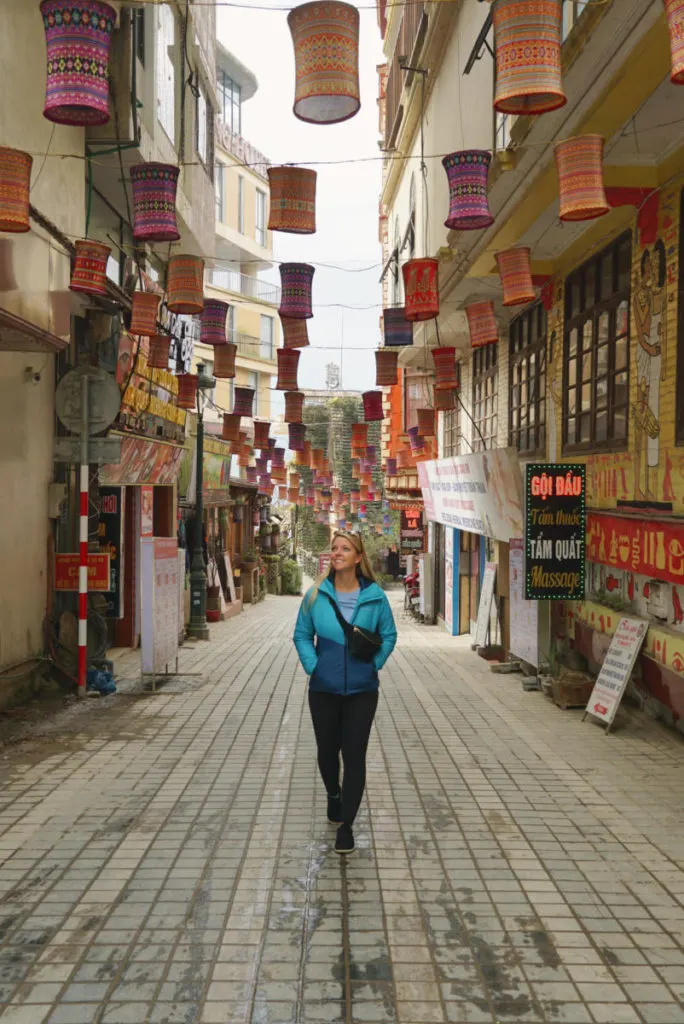
Walking is, of course, the cheapest way to get around Vietnam. And especially in the city, it can honestly be faster and safer than other modes of transportation.
Our best suggestion is to put the location you want to go in Google Maps (or a similar GPS app) to see the distance. If it’s within a distance you’re willing to walk you should probably do this option. It can also double as exercise and a sight-seeing experience!
But of course you can’t walk much longer distances, (such as from Hanoi to Halong Bay), so you will likely need to find another way to get around Vietnam.
Bus
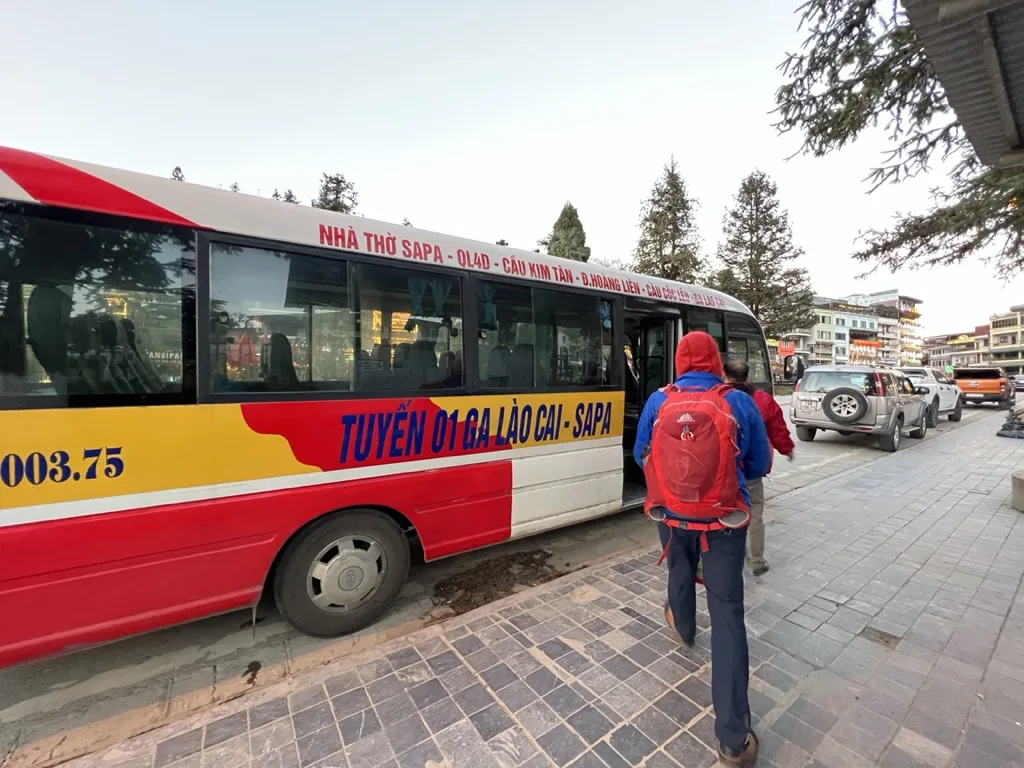
Bus is probably one of the cheapest ways to get around Vietnam other than walking. You can hop on a bus for less than $1 USD in many popular destinations. Although there can be a tough language barrier and lack of maps to really know which route you should take.
In crowded parts of the city, local buses will have a hard time moving. Due to their size, they often get “jammed” up behind other cars and motorbikes. They can’t quite maneuver around like small vehicles.
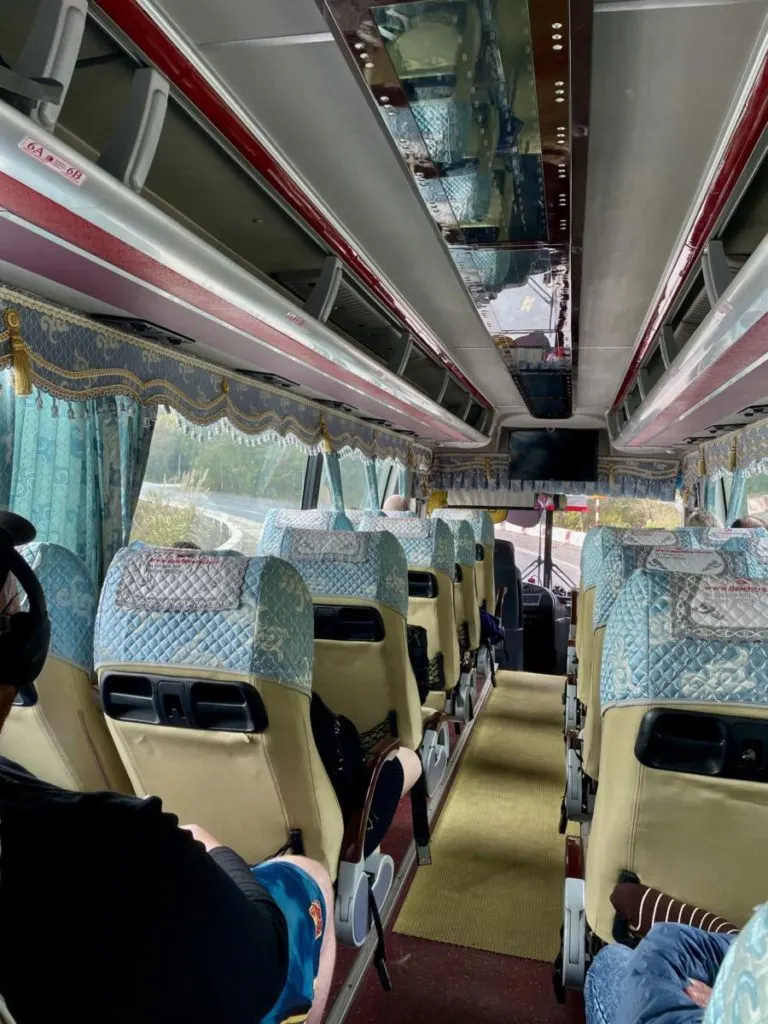
If you have the navigation skills and time, then we suggest taking public transportation in the city to save a few bucks. But we found it just easier to use a taxi or grab (more details on these below).
Bus is a good way to get around Vietnam cities, but it’s especially for traveling longer distances. Plus Vietnam is popularly known for sleeper buses. This way you get to lay down while you drive multiple hours to your next destination rather than a traditional non-comfy seat.
The sleeper bus seats recline nearly flat, so it’s relatively easy to sleep. But keep in mind that people over 6 feet tall usually have to bend their legs to fit.
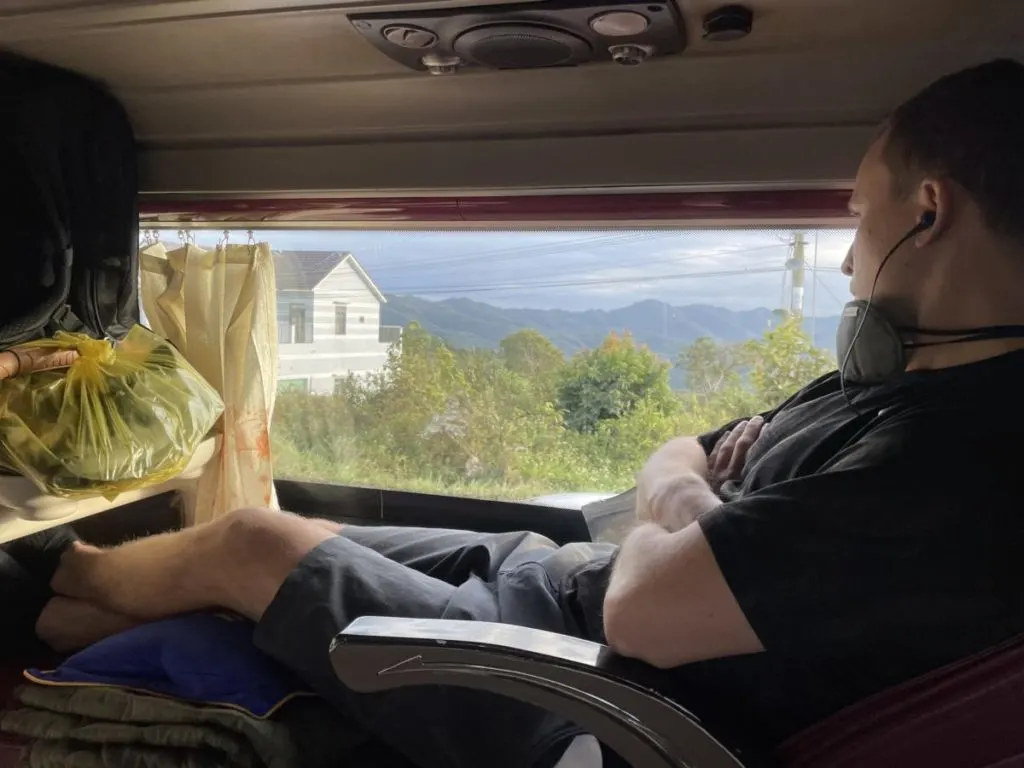
Many buses will stop for bathroom breaks at rest areas in various places. Some of the rest areas will also have food and little local shops.
Smaller Buses
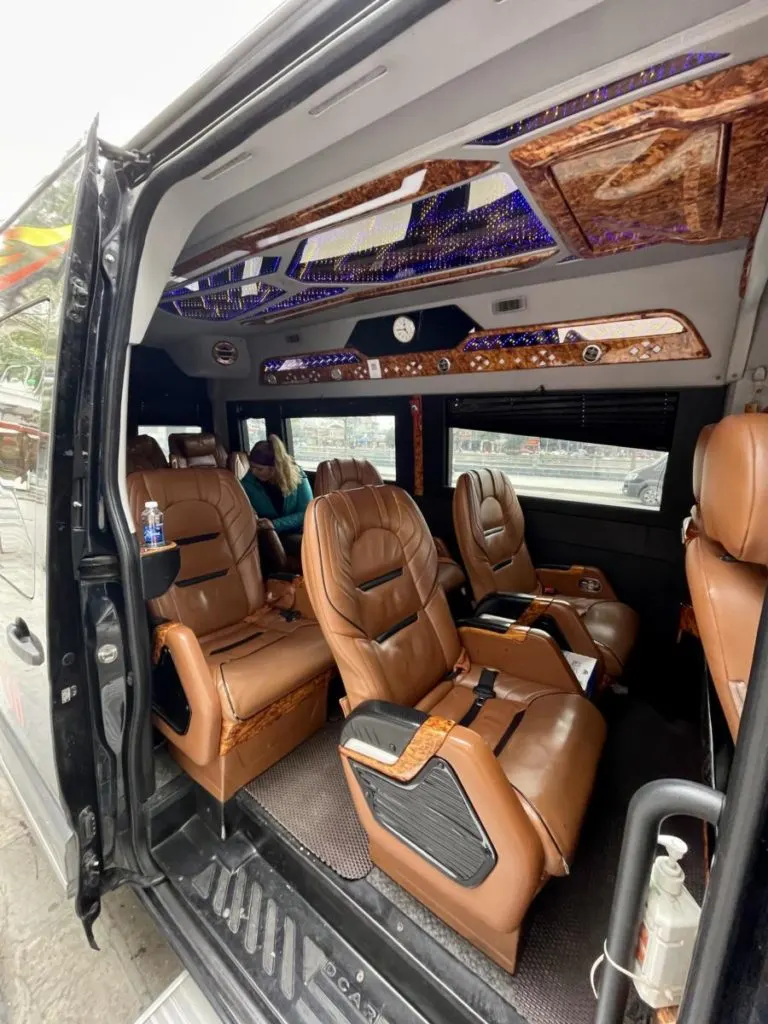
There will also be smaller buses, vans, or “limousines” for long distance commutes. These will likely be more comfortable, less bouncy, and generally safer. Therefore, if you find these options, taking a smaller bus is better than taking a larger bus.
But they usually cost a little bit more.
We use 12GoAsia for booking all of our bus transportation.
Train
Train was probably Jake’s and my favorite way to get around Vietnam. But it isn’t the cheapest route. And since we were traveling the country of Vietnam on a budget, we couldn’t always choose this mode of transportation. Plus trains don’t run every route like a bus might be capable of.
There are both daytime trains and overnight trains. Daytime trains typically are in a normal seat where you sit up. And overnight trains tend to have beds set up for you to catch some sleep. Of course you might be able to snag a sleeper train during the day as well.
Overnight Trains in Vietnam
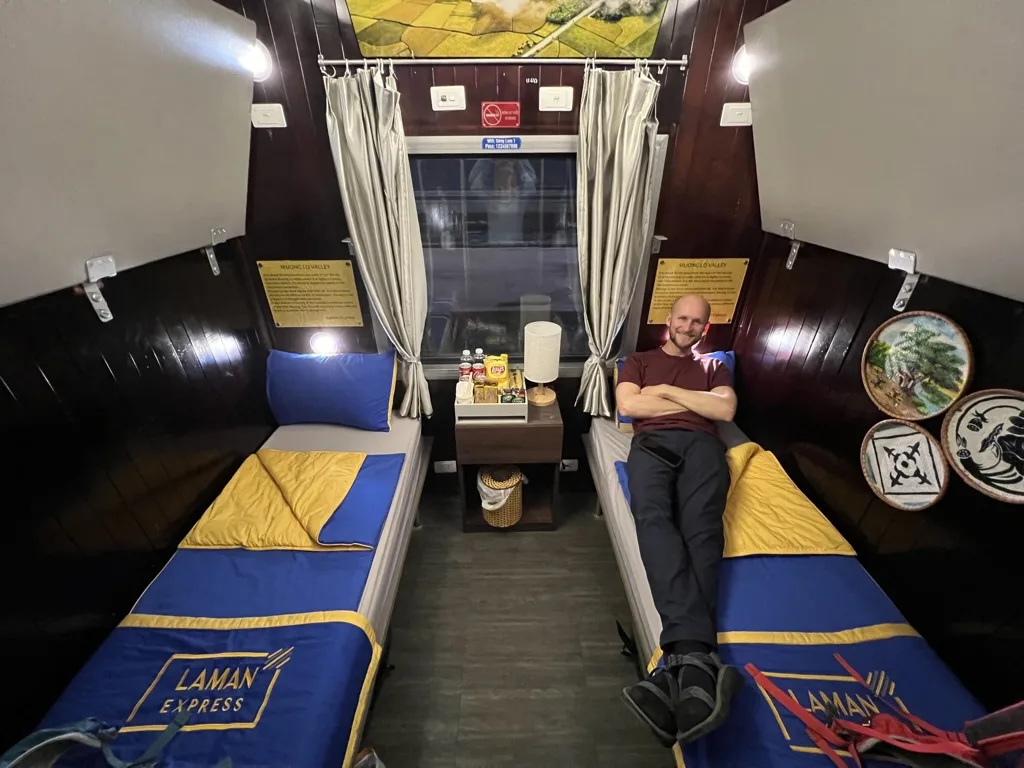
(This is a 4-berth room, with only 2 beds set up)
Everyone traveling in Vietnam should at least try an overnight train for their mode of transportation. Typically there are berths that have 2, 4, or 6 beds in a room.
A 2-berth room will almost always cost more (typically twice the price for a bed). But it means there are only 2 beds in a room. So if you are traveling with a partner, you can have the room all to yourself.
But you can always snag one berth in a shared room if you are solo traveling or ballin’ on a budget. It’s typical for most rooms to have 4 or 6-berths.
We have heard from other travelers to be careful on trains and that theft is common. Additionally, not everyone gets on a sleeper train to sleep. So you might be stuck in a room where someone chooses to watch a movie without headphones or is talking on the phone all night.
Therefore, I knew if I wanted any sleep, Jake and I should just try to get our own room. There were no private 2-bed rooms left, so we ended up just paying the cost of what a 4-berth room would cost. Personally, we felt it was worth it considering that an overnight train saves you the cost of accommodation for that night.
Different Seat & Bed Options On Vietnamese Trains
When choosing what seat or cart to be on in a Vietnamese train, there are different levels of comfort. The cheapest tickets tend to be on a hard seat. A slightly more expensive train ticket will be on a soft seat with a little more cushion.
The same comfort levels apply for beds on a sleeper train. Cheaper tickets tend to be on very hard beds. And the higher class ticket you choose, generally, the softer bed you get.
We use 12GoAsia when booking our train transportation.
Taxi
Taking a Taxi in Vietnam will likely be the most expensive option. But it can also serve as one of the faster modes of transportation around the country. But the comfort and convenience of a private taxi is sometimes worth it.
Tourists can usually grab a taxi outside popular tourism locations. There will likely always be a bunch of taxi drivers outside the airport, train station, bus station, etc to take you to your exact location.
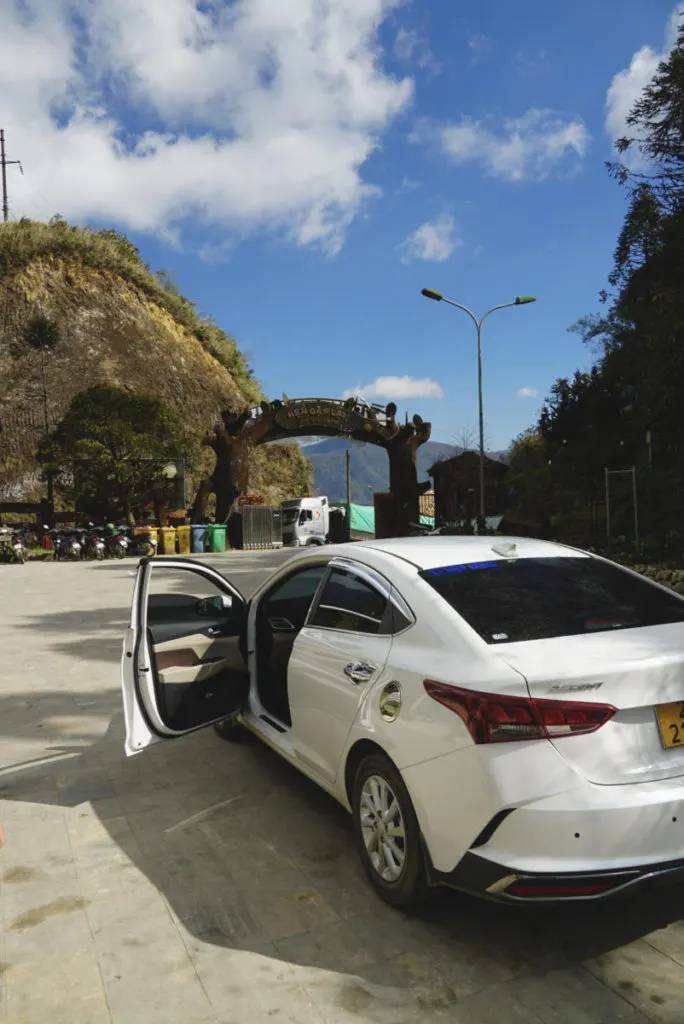
But you can also get a private taxi to longer distances as well. It will likely be much cheaper than getting a private taxi in the U.S. So to have your own space could make it worth the price.
We often would compare the price with the Grab app (more details below) and see if a taxi driver would take us for less. You can almost always haggle the price down with any taxi driver. They will start high, and have a breaking point before they will accept the ride.
Motorbike Taxi
It’s also common to ride on the back of a motorbike as a taxi ride. It’s much easier to get around the city on a motorbike than a car. Mainly because of its size, and being able to navigate narrow passages.
But they usually only allow one passenger on the back of each motorbike. So if you are traveling with multiple people, you each need your own motorbike taxi driver.
Grab App
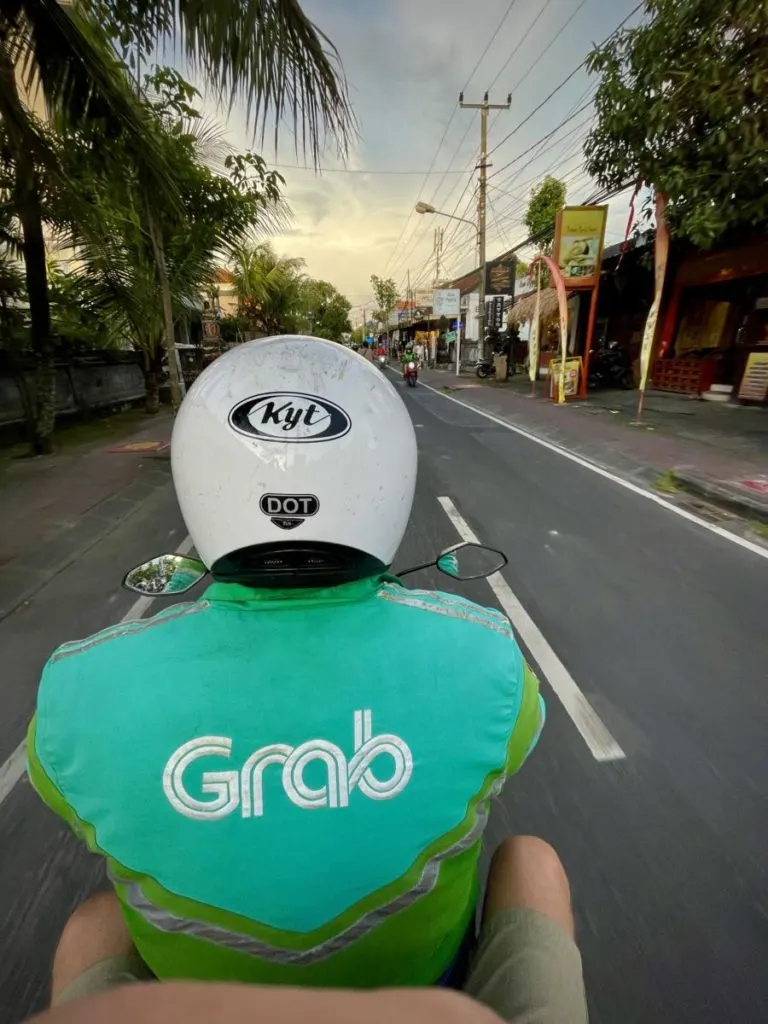
The Grab App in Southeast Asia is the equivalent to Uber or Lyft in America. Yup, it can even deliver food too!
Before traveling to Vietnam, be sure to download and set up the app. And also download and activate WhatsApp as well, it’s a nearly essential communication tool for traveling in Vietnam.
When you set up Grab, use your WhatsApp for verification, since it’s the best way to communicate with Vietnamese People. Unless you have an international plan with your cell phone carrier.
One bonus to Whatsapp is the built-in translator. The app was able to translate what the driver was saying from Vietnamese to English, which was essential in many cases.
We preferred using Grab over a random taxi for safety reasons. Each driver goes through a background check and driving history. And since communication can be difficult with a Vietnamese speaking person, it can be nice to just plug in the address of exactly where you are trying to go.
Plus there is a GPS tracker for guests in the Grab car. So it felt safer getting in a verified car, and being able to follow where the driver was taking us. And you can pay with your credit card, which is super helpful because many ATM’s in Vietnam only allow you to take out small amounts of money at a time.
Tours
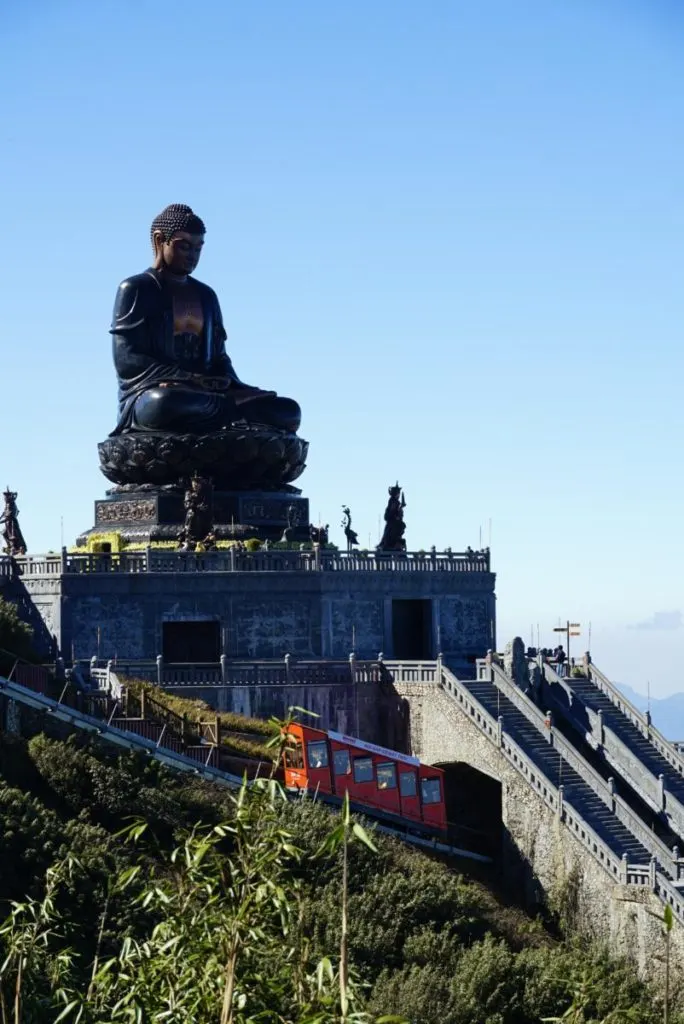
Many tour packages will include transportation to and from the activity and the cost of any transportation needed during the tour. We’ve had many tours booked on Get Your Guide and Viator that provided transportation.
We found this super helpful because there was often a person who would meet you in your hotel lobby, and bring you to the bus. It made the travel day stress-free, because the tour was bringing us to our exact location.
It might cost more than arranging transportation on your own, but again, sometimes the convenience is worth it.
Rent A Motorbike

A popular way to get around Vietnam is by renting a motorbike. Personally, we only felt comfortable riding motorbikes in more rural areas. Motorbiking in cities or on multi-lane highways is very intimidating.
“A motorbike license is required to operate a motorcycle or scooter in Vietnam. Motor scooter drivers without a license can be held criminally liable for injuries to or death of a victim in an accident, and you may be held in custody for an extended period of time without the ability to speak to family or a lawyer during the investigation.” – U.S. Embassy
Apparently it is legal to drive a 50cc scooter in Vietnam without a license. But this is only a good option if you want to bop around the city, and not really meant for long road trips around the country.
You will find many Vietnamese shops renting out motorbikes without requiring a license. Do this at your own risk. Additionally, they will often ask to hold your passport and/or a security deposit.
Getting travelers insurance is a great idea in general, but especially if you are planning to do higher risk activities like driving a motorbike. The two best travel insurance companies are Allianz and World Nomads.
Make sure you rent a helmet too!
Pedal Bike (Bicycle)
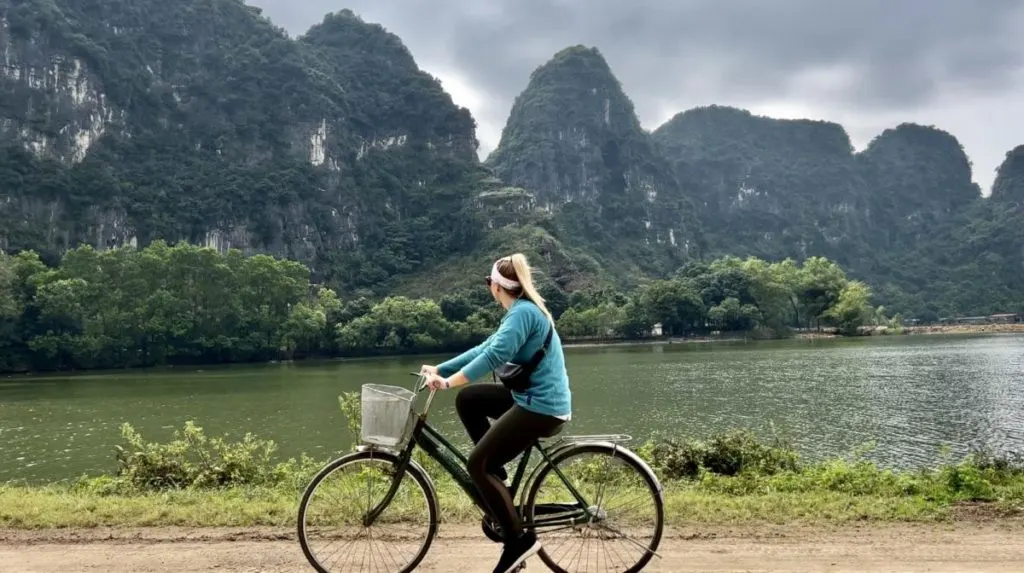
Having or renting a pedal bike is a decent option for getting around Vietnam. Be sure to have a way to lock up the bike when not in use. Use extreme caution if you ride your bicycle on the road. It is your responsibility to not be hit by a motorbike or car.
Be sure to rent a helmet too!
Domestic Flights
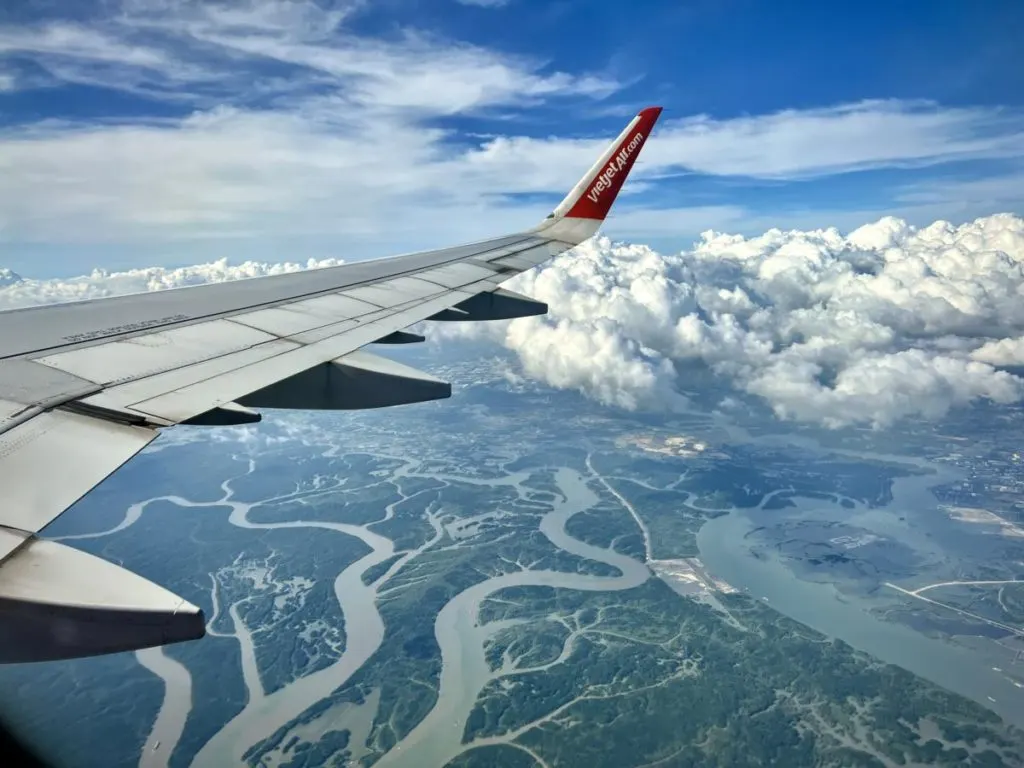
Domestic airfare is a cheap and fast way to get around Vietnam. Especially if you are traveling long distances and to and from major cities.
You can get a one-way ticket for direct flights from Hanoi to Ho Chi Minh City for as low as $29. Do note, many of these cheap flights are on budget airlines. Such as VietJet Air, JetStar Pacific, Bamboo Airways, etc.
And while they may be cheap for a seat, you might need to pay extra for checked bags, etc. (As of June 2023, Vietjet Air allows a maximum of 7 kg (15lbs) carry-on baggage). Checked bags on VietJet Air start around 180k VND ($7.50 USD) for a 20kg bag (44lbs) up to 630k VND ($26.50 USD) for a 70kg bag.
Jetstar Pacific and Bamboo Airlines are similar to Vietjet Air baggage restrictions.
Vietnam Airlines is slightly above a budget airline and you can still find some good deals between major city airports. Vietnam Airlines allows 12kg (26lbs) carry-on baggage weight for economy seats and 18kg (40lbs) for premium and business class seats.
Therefore, take these baggage requirements into consideration when finding cheap flights. They may look cheaper but overall might cost more if you need to check your bag.
We HIGHLY suggest adding an Air Tag to your baggage (even your carry on, in case you need to check it). Some of these budget airlines lose luggage, and if you can GPS track it, you might have a chance of actually getting your luggage back if it is lost.
International Flights in Vietnam
International flights will be slightly more expensive. But between neighboring countries or other countries close in proximity, you can snag some epic flight deals. If you can plan well in advance, then you might find some international flights for under $100 for one-way.
Ferries
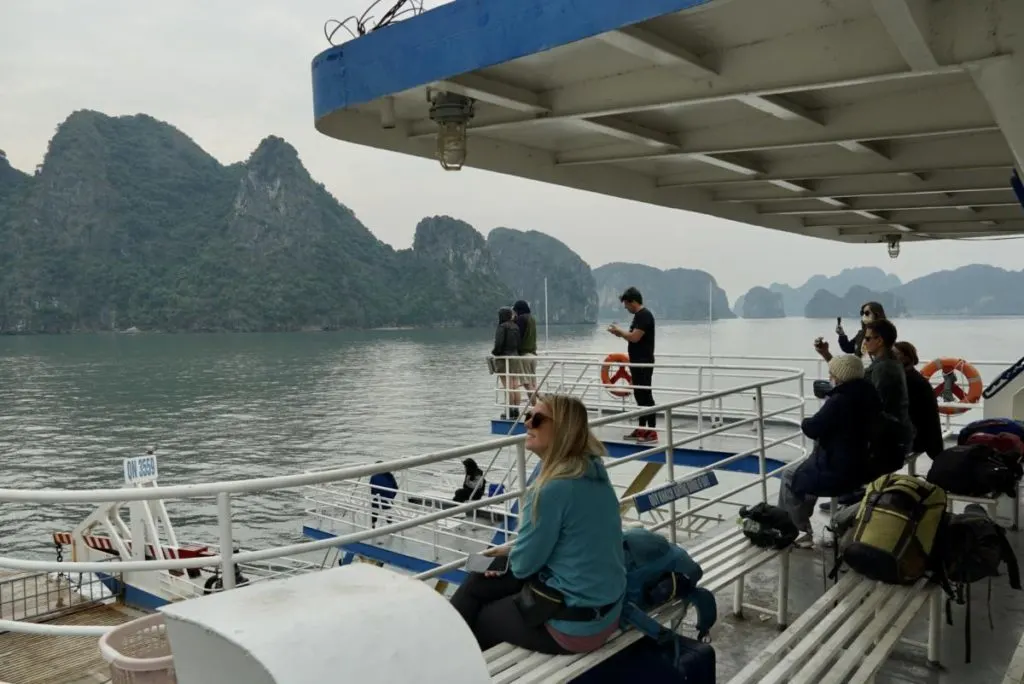
Ferries are a popular way to island hop or transport via water. Plus you can often bring a motorbike or car along on the ferry.
Ferry ports can be found all along the east side of the country. But primarily popular in the Ha Long Bay & Cat Ba area.
You can either purchase tickets at the ferry port, or book with 12GoAsia.
Water Taxi

For getting around the water, a water taxi may be necessary. This will often be for getting to and from destinations on the water.
Getting a water taxi can be a bit more of a challenge than a road taxi. Oftentimes there is a port or similar for ordering a water taxi. Your best plan of action is to ask in the port office if they can call you a water taxi. Or you can wait down by the water in hopes a water taxi shows up.
Also, if you know where you are traveling and you have contact with a local Vietnamese person, they might be able to provide you with a trusted water taxi’s WhatsApp phone number.
12GoAsia
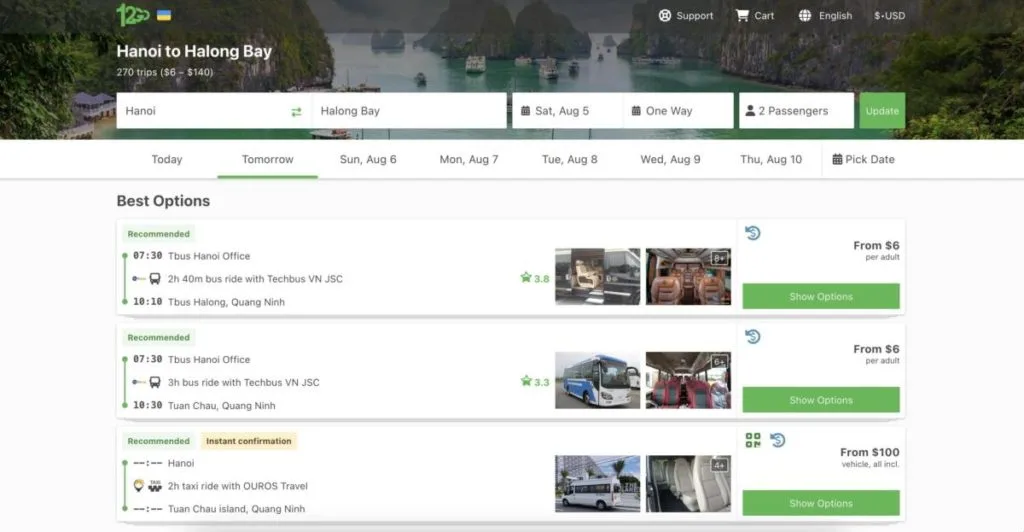
The best site for finding good deals on transportation around Vietnam is 12GoAsia. It’s a super easy website to get from point A to point B. Simply just type the location you will be leaving from and where you will be traveling to.
Then, there should be a list of different modes of transportation. Whether it be a bus, train, taxi, flying, ferry, etc. And, when necessary, 12GoAsia will often package two different types of transportation together on one itinerary.
For example, they will offer a route that includes a bus ride for most of the trip and then a taxi to take you the final leg.
12GoAsia has different companies, times, prices, and reviews for each itinerary.
So considering those differences, you can choose which one will suit you best.
Advice For Choosing The Best Mode Of Transportation
Here’s our final thoughts on why to choose one mode of transportation over another.
Consider the distance traveled and your budget when choosing how to get around Vietnam.
The rural roads in Vietnam are windy. So vehicles that travel over the roads will have to deal with with
Why Choose A Bus
Consider that not all buses are the same. There are the local bus routes that run somewhat regular schedules. And then there are buses that are used exclusively for tourism. And likewise, some buses just have regular seats, and others have sleeper bunks.
The local buses are often the cheapest, but they can be the most unsafe, slow and unreliable. Plus there are frequent stops on the bus, such as rest areas, smoke breaks, other random stops, etc. Local buses sometimes felt like a bit of a free-for-all.
We found that local buses were not good at sticking to a schedule. And it is also very common for buses to be over-packed (such as locals just sitting on the ground because there are no extra seats).
The buses used for tourism are usually nicer inside, more punctual, and the staff speaks better English. These more expensive buses are often ones affiliated with tour operators or running between popular tourist destinations.
Why Choose A Train
We highly suggest trains if that is an option. They obviously have limited routes that they can travel. but they follow a schedule better and are generally a smoother ride.
The trains usually take slightly longer, but there will be fewer stops overall. And its not typical for the train to be over-packed and having passengers sitting on the ground. Especially for overnight trips, a train will be more peaceful than a sleeper bus.
Why Choose A Taxi
Taxi can be the most straightforward and convenient, but will likely cost the most. The other major issue with taxis is that at pretty much all major transportation hubs (airports, bus stations, ports) taxi drivers bombard you the second you arrive. This can be an intimidating experience in a foreign country, because you don’t know if these people are reputable taxi drivers or potential scammers.
Whenever possible try to find Taxis that are part of a reputable company (the biggest ones in Vietnam are Mai Linh Taxi, VinaSun, G7 Taxi, and Taxi Group).
Therefore, we only suggest taking taxis if budget isn’t an issue and you can book with a reputable taxi company. And it’s best for shorter trips (less than 2 hours).
Why Choose A Grab
In our experience, the Grab app provides cheaper rides than local taxis in almost all scenarios. And having the accountability of a background-checked driver, GPS-tracking, and digital records of trips offers peace of mind.
You can book a car, motorbike, or even have food delivered with the app.
Grab is best for short trips (less than 2 hours).
Why Choose An Airplane
Airplane travel in Vietnam is the fastest way to travel long distances. However, getting to the airport and time spent in the airport can add lots of travel time.
Domestic air travel in Vietnam actually surprisingly affordable. But something to watch out for is very restrictive baggage weight limits. So you might want to factor in extra cost for baggage fees.
Why Choose A Tour Operator
While you are planning your trip to Vietnam, see if there are any tours that include transportation. It might be as easy as just booking a tour that can take care of everything for you (transportation, accommodation, activities, meals, and more).
So it’s always a good idea to have a look on Get Your Guide or Viator and see what ‘all-inclusive’ tour packages are available.
Why Choose A Rental Motorbike or Car
Motorbikes and rental cars give you the most autonomy for getting around Vietnam on your schedule.
However, in our experience added stress of driving in a foreign country, navigating, parking etc are not worth it. If you are not an experience motorbike rider, we do not recommend renting a motorbike to get around Vietnam, especially in cities. The risk of personal injury is a little bit to high, especially since there are other great options available.
Only in rural areas did we feel somewhat comfortable riding motorbikes for short distances.
Related Posts:
Traveling to Vietnam for the first time? Follow these helpful tips to know before visiting Vietnam.
Also, be sure to check out some of our favorite places in Vietnam:
Save This Post on ‘How To Get Around Vietnam’ For Later
